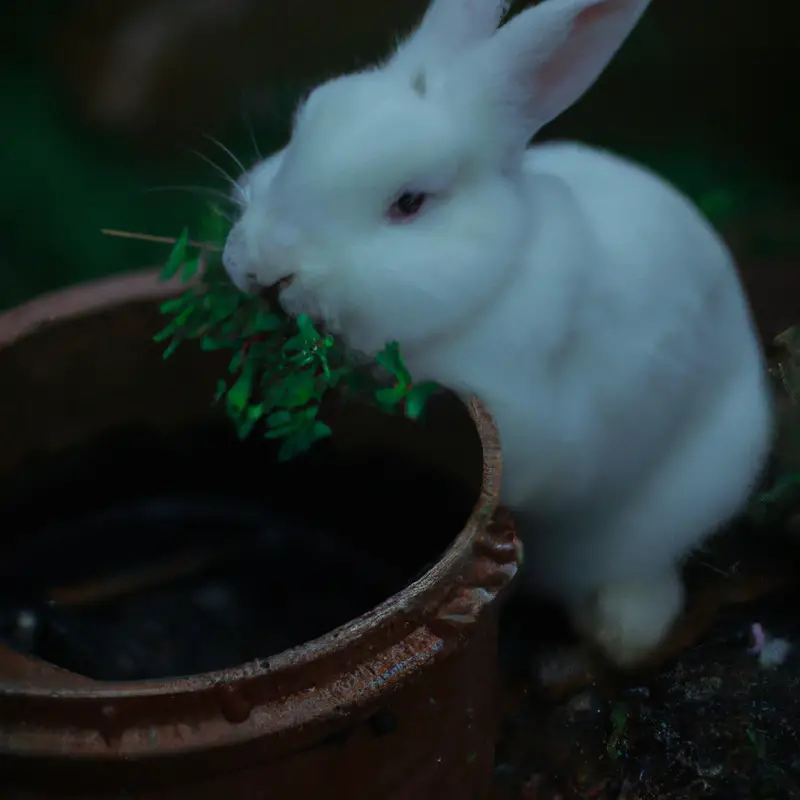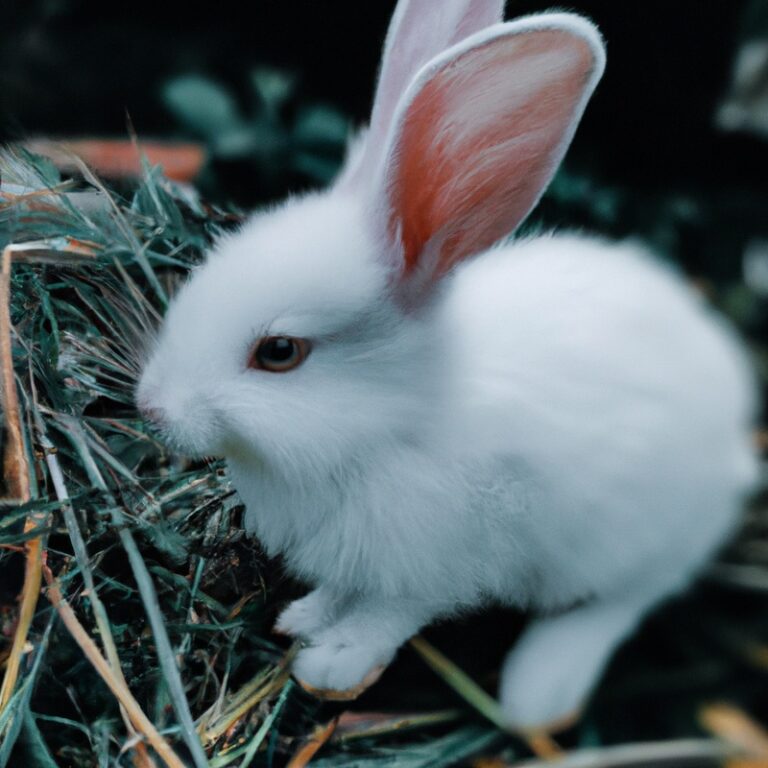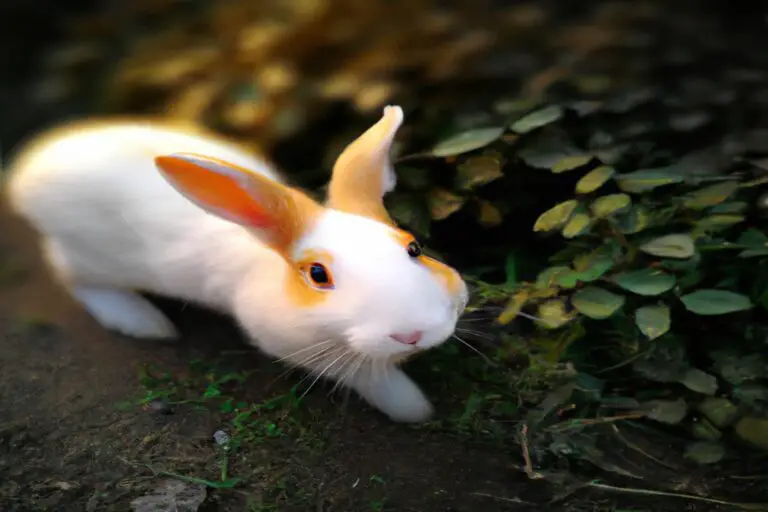Will a Rabbits Broken Leg Heal On Its Own – Naturally!
Key Takeaways:
- A rabbit’s broken leg may not heal on its own and may require medical intervention.
- Seeking veterinary care for a rabbit with a broken leg is essential to ensure proper healing.
- Timely treatment of a broken leg in a rabbit can prevent further complications and improve chances of recovery.
- Immobilizing the broken leg through splinting or casting can aid in the healing process for rabbits.
Hey there! Have you ever wondered if a rabbit’s broken leg can heal on its own?
It’s a tough question, but an important one.
We all want what’s best for our furry friends, after all.
In this article, we’ll dive into the world of rabbit leg injuries and explore whether a broken leg can heal without intervention.
We’ll discuss common causes, symptoms, and treatment options for these injuries, along with tips for home care and rehabilitation.
So, if you’re curious about whether a rabbit’s broken leg can mend itself, keep on reading!
| Yes | No | |
| Pros | 1. Rabbits have a natural ability to heal and regenerate tissues, which can contribute to the healing process of a broken leg. 2. When left undisturbed, rabbits may be able to naturally heal their broken leg with rest, immobilization, and proper nutrition. | 1. A broken leg may not heal properly without any intervention, resulting in permanent disability or chronic pain. 2. There is a risk of secondary complications, such as infections or deformities, if the broken leg is not treated promptly. |
| Cons | 1. There is a possibility of incorrect healing, leading to an abnormal leg position. 2. Rabbits may experience prolonged pain and discomfort during the healing process. 3. Without veterinary intervention, rabbits may have limited mobility during the healing period. | None |
Understanding Rabbit Leg Injuries
Rabbit leg injuries can occur for various reasons, and it is important to understand them to provide proper care.
Common Causes of Rabbit Leg Injuries
Rabbit leg injuries can occur due to a variety of reasons.
Common causes include falls from heights, accidental trauma, getting caught in wire mesh or other tight spaces, and improper handling.
Sometimes, diseases like arthritis or fractures due to weak bones can also lead to leg injuries in rabbits.
It is important to provide a safe and secure environment for your rabbit, handle them gently, and regularly check for any signs of discomfort or injury.
Keeping their living area free of hazards and providing proper nutrition can also help prevent leg injuries in rabbits.
Types of Rabbit Leg Injuries
Rabbits can experience various types of leg injuries. These can include fractures or breaks in the bones, sprains or strains in the ligaments, and dislocations where the joints become improperly aligned.
These injuries can occur from accidents, falls, or even rough handling.
It’s important to seek veterinary care for a rabbit with a leg injury, as improper healing can lead to long-term issues. Treatments may include immobilization, pain management, and possibly surgery depending on the severity of the injury.
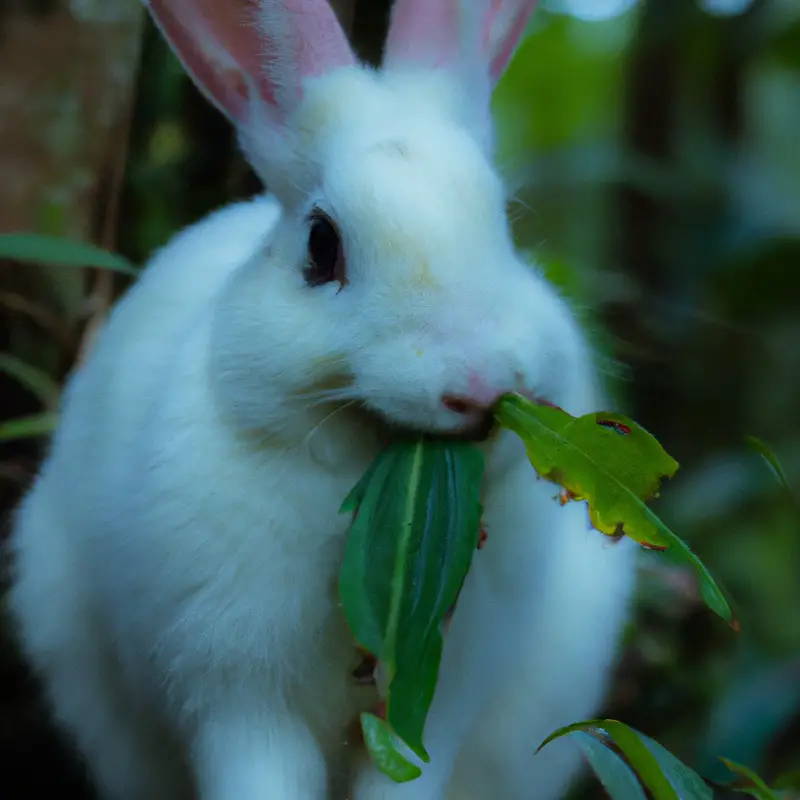
Recognizing a Broken Rabbit Leg
To recognize a broken leg in a rabbit, look for signs such as limping, swelling, or a visibly misshapen limb. Examine the leg carefully and observe your rabbit’s behavior for any indications of pain or discomfort.
Symptoms of a Broken Leg in Rabbits
So, you suspect that your rabbit may have a broken leg? Let’s talk about some common symptoms to look out for.
If your rabbit is not using one of its legs, limping, or hopping awkwardly, these could all be signs of a broken leg.
You may also notice swelling, bruising, or an unusual posture in the affected leg. It’s important to remember that I’m not a vet, but if you observe any of these symptoms, it’s vital to seek veterinary care for your rabbit as soon as possible.
How to Examine a Rabbit’s Leg for Injury
To examine a rabbit’s leg for injury, start by gently inspecting the leg for any signs of swelling, bruising, or deformity.
Carefully feel along the leg to check for any areas of tenderness or discomfort.
Look for any open wounds or bleeding.
Observe the rabbit’s behavior and mobility to see if they are favoring or avoiding putting weight on the leg.
If you suspect a serious injury, it is best to consult a veterinarian for a proper diagnosis and treatment.
Remember to handle the rabbit with care during the examination to avoid causing further distress or harm.
Seeking Veterinary Care for a Rabbit with a Broken Leg
If your rabbit has a broken leg, it is important to seek immediate veterinary care for a professional diagnosis and treatment.
Importance of Professional Diagnosis and Treatment
Professional diagnosis and treatment are vital for a rabbit with a broken leg.
A veterinarian will accurately assess the severity of the fracture and determine the best course of action.
They have the expertise to properly set the bone and provide appropriate pain management.
Not seeking professional care can lead to complications such as infection or improper healing.
Your rabbit’s well-being is paramount, so it’s crucial to consult a vet for a proper diagnosis and treatment plan.
Finding a Rabbit-Savvy Veterinarian
Finding a rabbit-savvy veterinarian is essential for the health and well-being of your bunny. Look for a vet with experience in treating rabbits specifically.
Ask fellow rabbit owners for recommendations or consult local rabbit rescue organizations for referrals.
When you find a potential veterinarian, inquire about their experience with rabbits and their approach to rabbit healthcare. It’s important to ensure your vet has the necessary knowledge and understanding of rabbits to provide the best care possible for your furry friend.

What to Expect During a Veterinary Visit
What to Expect During a Veterinary Visit: During a veterinary visit for your rabbit with a broken leg, you can expect the following:
- Examination: The veterinarian will carefully examine your rabbit’s leg and may need to take X-rays to determine the extent of the injury.
- Diagnosis: Based on the examination and X-ray results, the veterinarian will diagnose the specific type and severity of the leg fracture.
- Treatment options: The veterinarian will discuss treatment options with you, which may include surgery, splinting, or pain management.
- Cost discussion: The veterinarian will also discuss the cost of treatment and any potential follow-up care that may be required.
- Aftercare instructions: Depending on the chosen treatment, the veterinarian will provide you with detailed instructions on how to care for your rabbit during the recovery process.
It’s crucial to seek veterinary care for your rabbit with a broken leg to ensure proper treatment and a smoother recovery.
Treatment Options for a Rabbit’s Broken Leg
To treat a rabbit’s broken leg, there are three main options: medication and pain management, splinting or casting the leg, and surgical interventions for severe leg injuries.
Medication and Pain Management
For medication and pain management for a rabbit’s broken leg, it’s important to consult with a veterinarian.
They may prescribe pain medications to help alleviate discomfort during the healing process.
Follow their instructions carefully and administer the medication as directed.
Avoid giving over-the-counter pain relievers without veterinary approval, as they can be harmful to rabbits.
Additionally, creating a comfortable and stress-free environment can help minimize pain.
Limit your rabbit’s movement, provide soft bedding, and ensure they have easy access to food and water.
Splinting or Casting the Leg
When it comes to treating a rabbit’s broken leg, one option is splinting or casting the leg. Splinting involves immobilizing the leg with a rigid support like a wooden or metal splint, while casting uses a plaster or fiberglass cast to provide support.
Splinting is often preferred for rabbits because it allows for easier access to the leg for necessary care and monitoring.
However, casting may be necessary for more severe fractures. The choice between splinting and casting depends on the nature and severity of the break, so it’s important to consult with a veterinarian for the best treatment option.
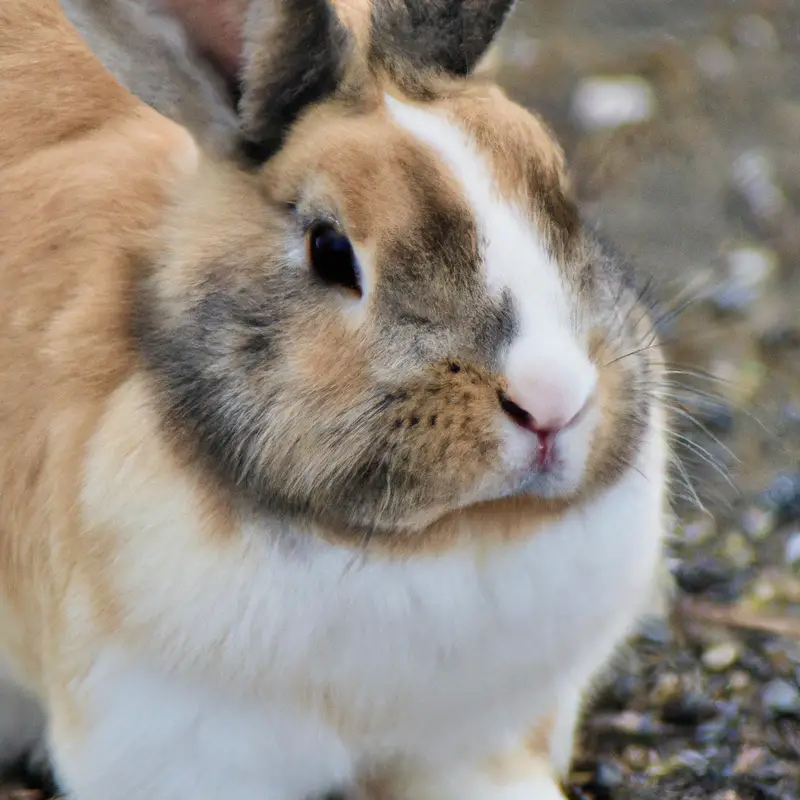
Surgical Interventions for Severe Leg Injuries
Surgical interventions are often necessary for severe leg injuries in rabbits.
These injuries may include fractures, dislocations, or severe soft tissue damage.
Surgery can help realign and stabilize the broken bone or repair damaged tissues.
In some cases, pins, plates, or screws may be used to secure the fractured bone.
The specific procedure will depend on the nature and severity of the injury.
It is important to consult a veterinarian who specializes in exotic animals for proper diagnosis and treatment options.
Home Care for a Rabbit with a Broken Leg
To provide home care for a rabbit with a broken leg, create a safe and comfortable space and assist with daily activities, while ensuring proper nutrition and hydration.
Creating a Safe and Comfortable Space
Creating a safe and comfortable space for your rabbit with a broken leg is essential for their well-being and recovery. Here are some tips to help:
- Ensure the area is free from hazards, such as loose wires or sharp objects.
- Provide soft bedding, such as towels or blankets, to make them feel cozy.
- Set up a litter box close by for easy access.
- Place food and water bowls within reach, making it convenient for them to eat and drink.
- Consider adding a safe hiding spot, like a small box or tunnel, where they can retreat and feel secure.
- Keep the temperature of the space comfortable, neither too hot nor too cold. Regularly monitor and maintain suitable conditions.
Assisting with Daily Activities
Assisting a rabbit with daily activities can be challenging when it has a broken leg, but there are a few things you can do to help.
Make sure the rabbit has easy access to food, water, and a litter box.
Provide a comfortable and safe environment for it to rest and move around in.
You may need to assist with grooming and hygiene if the rabbit is unable to do so itself.
Lastly, be patient and gentle when handling the rabbit to avoid causing any additional pain or injury.
Proper Nutrition and Hydration
Proper nutrition and hydration are crucial for a rabbit with a broken leg to heal properly. Here’s what you need to know:
- Provide fresh water: Ensure your rabbit has access to clean, fresh water at all times. Dehydration can hinder the healing process, so make sure to check the water supply regularly.
- Offer a balanced diet: Feed your rabbit a balanced diet that includes a variety of fresh hay, vegetables, and a small amount of pellets. Avoid giving sugary or processed foods, as they can negatively impact healing.
- Monitor appetite: A decreased appetite may indicate pain or discomfort. If your rabbit is not eating or drinking adequately, consult a veterinarian.
- Talk to a vet: It’s important to consult a veterinarian to determine the specific dietary needs of your rabbit with a broken leg. They may recommend supplements or other dietary adjustments to support healing.
Remember, providing proper nutrition and hydration will aid in your rabbit’s recovery and overall well-being.
Rehabilitation and Recovery for a Rabbit with a Broken Leg
To aid in the rehabilitation and recovery of a rabbit with a broken leg, exercises and physical therapy can play a key role.
Exercises and Physical Therapy
Exercises and physical therapy are essential for helping a rabbit with a broken leg recover and regain mobility. Here are some important considerations for this type of treatment:
- Controlled movement: Controlled exercises and physical therapy can help the rabbit gradually regain strength and flexibility in the leg.
- Range of motion exercises: Gently moving the leg through its range of motion can prevent stiffness and promote healing.
- Strengthening exercises: Exercises that focus on strengthening the leg muscles can help support the injured leg and aid in recovery.
- Rehabilitation aids: Certain aids, such as ramps or elevated platforms, can assist the rabbit in performing exercises safely.
- Regular monitoring: It’s crucial to closely monitor the rabbit’s progress during exercises and adjust them accordingly to ensure optimal healing.
- Consult a veterinarian: Always consult a veterinarian before starting any exercises or physical therapy with a rabbit to ensure they are tailored to the specific injury and the rabbit’s overall health.
Remember, exercises and physical therapy should be performed under professional guidance to avoid causing further harm.
Monitoring Healing Progress
Monitoring healing progress is an important part of helping a rabbit with a broken leg.
It allows you to ensure that the leg is healing properly and identify any potential complications early on.
You can monitor healing progress by regularly checking the leg for signs of improvement, such as decreased swelling and increased mobility.
It’s also important to consult with a veterinarian who can provide guidance and recommend any necessary adjustments to the rabbit’s treatment plan.
With careful monitoring, you can help the rabbit on its road to recovery.
Preventing Future Injuries
Preventing future injuries is an important aspect of caring for your rabbit.
Here are a few tips to help keep your furry friend safe and injury-free:
- Ensure a safe and secure living environment for your rabbit, with no sharp edges or objects that can cause harm.
- Handle your rabbit gently and carefully, supporting their body to prevent accidental falls or injuries.
- Provide a balanced diet and regular exercise to maintain your rabbit’s overall health and strength.
- Regularly inspect your rabbit’s living space for any potential hazards, such as loose wires or small openings where they could get stuck.
- Keep an eye on your rabbit’s behavior and any signs of discomfort or pain, as early detection of issues can help prevent further injuries.
- Consult with a veterinarian regularly for check-ups and to address any concerns about your rabbit’s well-being.
- If your rabbit is prone to accidents or has a history of injuries, consider using soft bedding and providing ample space for them to move around safely.
- Monitor interactions with other pets or small children to prevent any accidental harm to your rabbit.
Taking these precautions and staying alert to your rabbit’s needs can go a long way in preventing future injuries and fostering a happy and healthy life for your furry companion.
Frequently Asked Questions (FAQs)
Can a broken leg in a rabbit heal on its own?
Yes, a broken leg in a rabbit can heal on its own. Rabbits have remarkable healing abilities, and their bones can regenerate.
However, it is important to note that not all fractures will heal without intervention.
It depends on the severity and location of the break. It is always best to consult a veterinarian who can assess the situation and provide appropriate treatment options for your rabbit’s broken leg.
How long does it take for a rabbit’s broken leg to heal?
A rabbit’s broken leg can take around 6-8 weeks to heal. During this time, it’s crucial to keep the rabbit immobilized and provide proper care.
The duration of healing may vary depending on several factors, including the severity of the fracture and the rabbit’s overall health.
It’s important to consult a veterinarian for a proper diagnosis and guidance on helping your rabbit recover.
What happens if a rabbit’s broken leg is not treated?
If a rabbit’s broken leg is not treated, it can lead to severe complications. The fracture might not heal properly, causing the leg to be permanently deformed or shortened.
The rabbit will likely experience chronic pain and mobility issues, hampering its ability to move and explore.
In addition, untreated fractures can result in internal damage or infection, further compromising the rabbit’s health. It’s essential to seek veterinary care as soon as possible to ensure the best outcome for your rabbit’s recovery.
Can a rabbit with a broken leg still hop or move around?
Yes, a rabbit with a broken leg can still hop or move around, but it may be more difficult for them.
Rabbits have a strong instinct to hide their injuries, so they may try to move despite the pain.
However, it’s important to limit their movement and provide them with proper veterinary care to ensure their leg heals correctly.
Putting them in a small, confined space can prevent further injury and promote healing.
Always consult a veterinarian for advice and assistance with a rabbit’s broken leg.
Are there any complications or risks associated with treating a rabbit’s broken leg?
Treating a rabbit’s broken leg can come with some potential complications and risks.
One risk is the possibility of infection at the site of the injury, which could delay the healing process.
Additionally, improper immobilization or handling during treatment could worsen the injury or cause additional damage.
It’s essential to seek veterinary care to ensure the leg is treated properly and minimize the risks associated with treatment.
Regular follow-up appointments with the vet will help monitor progress and address any potential complications that may arise.
Final Verdict
It is highly unlikely that a rabbit’s broken leg will heal on its own without proper veterinary care.
Recognizing and seeking prompt medical attention for a broken leg is crucial to ensure the best chances of recovery for your furry friend.
Veterinary diagnosis, treatment, and ongoing care, including medication, splinting or surgical interventions, are essential for a successful healing process.
Home care, rehabilitation, and monitoring progress are also vital in helping your rabbit regain mobility and prevent future injuries.
Remember, seeking professional help and providing a safe and loving environment will give your rabbit the best chance at a full recovery.

